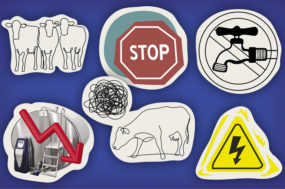Clinical hypocalcemia (also known as milk fever) affects between 1 and 13 percent of all transition dairy cows and is characterized by cows having blood calcium levels below 5.5 mg/dl. Subclinical hypocalcemia (SCH) may affect more than 50 percent of all transition dairy cows and is characterized by cows having total blood calcium concentrations between 5.6 and 8.5 mg/dl. Both forms can negatively impact the health, production and fertility of dairy cows, leading to decreased dairy farm profitability.
Key topics featured on the website include:
- Why transition cows are susceptible to hypocalcemia
- How producers can determine the prevalence of SCH in their herds
- Benefits of and guidelines for feeding a negative dietary cation-anion difference (DCAD) diet, which has been demonstrated to be a highly effective way to help reduce the incidence of low blood calcium in transition dairy cows
- The estimated return on investment for feeding a properly formulated negative DCAD diet
- The best time for monitoring urine pH values
The website also provides information about Animate, a nutritional specialty product of Phibro Animal Health Corp., which is formulated with recommended levels of chloride and sulfur for easy and effective negative DCAD ration formulation. PD
—From Phibro Animal Health Corp. news release








